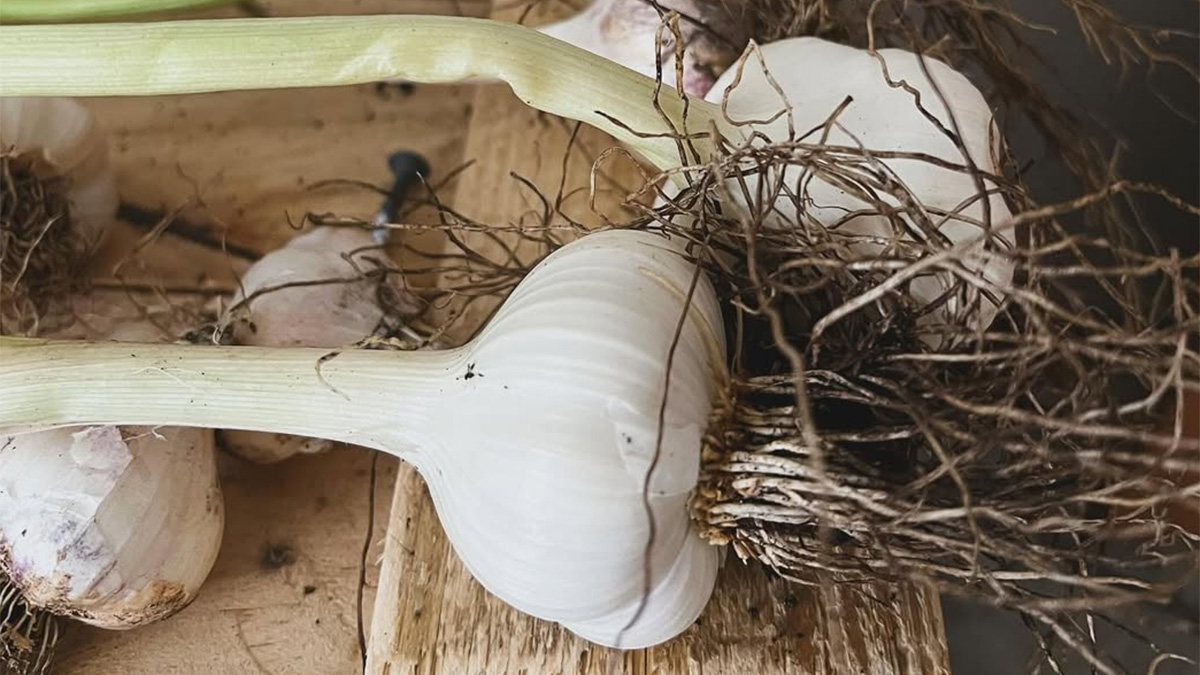Growing Garlic: When to Plant, How to Harvest, and What to Avoid

Garlic is one of the easiest and most satisfying crops to grow at home, offering bold flavor and long storage life. With the right timing and a few key techniques, even beginner gardeners can enjoy a successful harvest. Whether you’re planting in a backyard bed or raised container, garlic rewards patience with a season’s worth of kitchen-ready bulbs.
Understanding the types of garlic
Garlic comes in two main types: hardneck and softneck. Hardneck garlic produces a central flowering stalk called a scape and tends to grow best in regions with cold winters. Softneck garlic lacks a scape, stores longer, and typically does better in warmer southern climates.
Hardneck varieties like ‘Music’ or ‘German Red’ are known for their bold flavor and easy-to-peel cloves. Softneck types, such as ‘California Early’ or ‘Inchelium Red,’ offer a mild flavor and are great for braiding. Choosing the right type depends largely on your growing zone and how long you want your garlic to store.
When to plant garlic
The best time to plant garlic in most parts of the U.S. is in the fall, typically from late September through November. Planting four to six weeks before the ground freezes allows roots to establish before winter dormancy. In milder climates, gardeners can also try a spring planting, but bulbs may be smaller.
Before planting, separate garlic bulbs into individual cloves, leaving the papery skins intact. Use the largest cloves for planting and reserve the smaller ones for cooking. Do not peel the cloves, as this protects them from soil-borne diseases.
How to plant garlic
Choose a sunny location with well-draining, fertile soil. Loosen the soil to a depth of 6 to 8 inches and mix in compost to improve structure and nutrients. Plant cloves with the pointed end facing up, about two inches deep and spaced four to six inches apart in rows.
After planting, cover the area with a thick layer of mulch such as straw or shredded leaves. Mulch helps insulate the soil, suppresses weeds, and protects young garlic shoots from temperature swings. In spring, remove some of the mulch if it becomes too matted or holds too much moisture.
Caring for garlic during the growing season
Garlic requires regular watering during the spring and early summer as the bulbs begin to swell. Keep the soil evenly moist but not soggy, especially in the weeks after the scapes emerge. Once the leaves begin to yellow in mid to late summer, reduce watering to allow the bulbs to cure naturally in the ground.
Fertilize in early spring with a nitrogen-rich source such as fish emulsion or blood meal. Stop feeding once the bulbs start to form to prevent overly leafy growth. If you are growing hardneck garlic, remove the curly scapes when they appear to direct energy back into the bulb.
When and how to harvest garlic
Garlic is typically ready to harvest in mid to late summer, around seven to nine months after planting. Look for lower leaves turning brown while the upper ones remain green. Use a garden fork or trowel to gently lift the bulbs rather than pulling them, which can damage the stem or cloves.
Once harvested, leave the garlic unwashed and intact, including stems and roots. Hang in bunches or lay flat in a dry, shaded, well-ventilated area for two to three weeks. Proper curing is essential for flavor development and long-term storage.
What to avoid when growing garlic
One of the most common mistakes is planting garlic too late in fall, which can result in weak or small bulbs. Avoid using grocery store garlic for planting, as it is often treated to prevent sprouting and may carry diseases. Choose certified seed garlic from reputable suppliers to ensure strong, healthy plants.
Garlic needs space and good airflow to prevent fungal issues, so avoid overcrowding or planting in wet, compacted soil. Water carefully and avoid soaking the plants in late spring and summer. Rotate your garlic crop each year to reduce the risk of soil-borne disease like white rot.
Storing and using your garlic
Once cured, trim the stems to about an inch above the bulb and remove loose dirt and outer wrappers by hand. Store garlic in a cool, dark, and dry location with plenty of airflow, such as in mesh bags or baskets. Softneck varieties can also be braided and hung for both storage and decoration.
Use fresh garlic in a wide variety of dishes, from sautés to soups. You can also roast whole heads, preserve cloves in oil (with proper safety precautions), or dehydrate them for garlic powder. Even sprouted garlic can be planted again or used in cooking if the flavor is still mild.
Conclusion
Growing garlic is a rewarding experience that fits into nearly any garden space with minimal effort. From choosing the right type to harvesting at the perfect time, a little care goes a long way. Once you taste your own homegrown garlic, you’ll never want to go back to store-bought.
